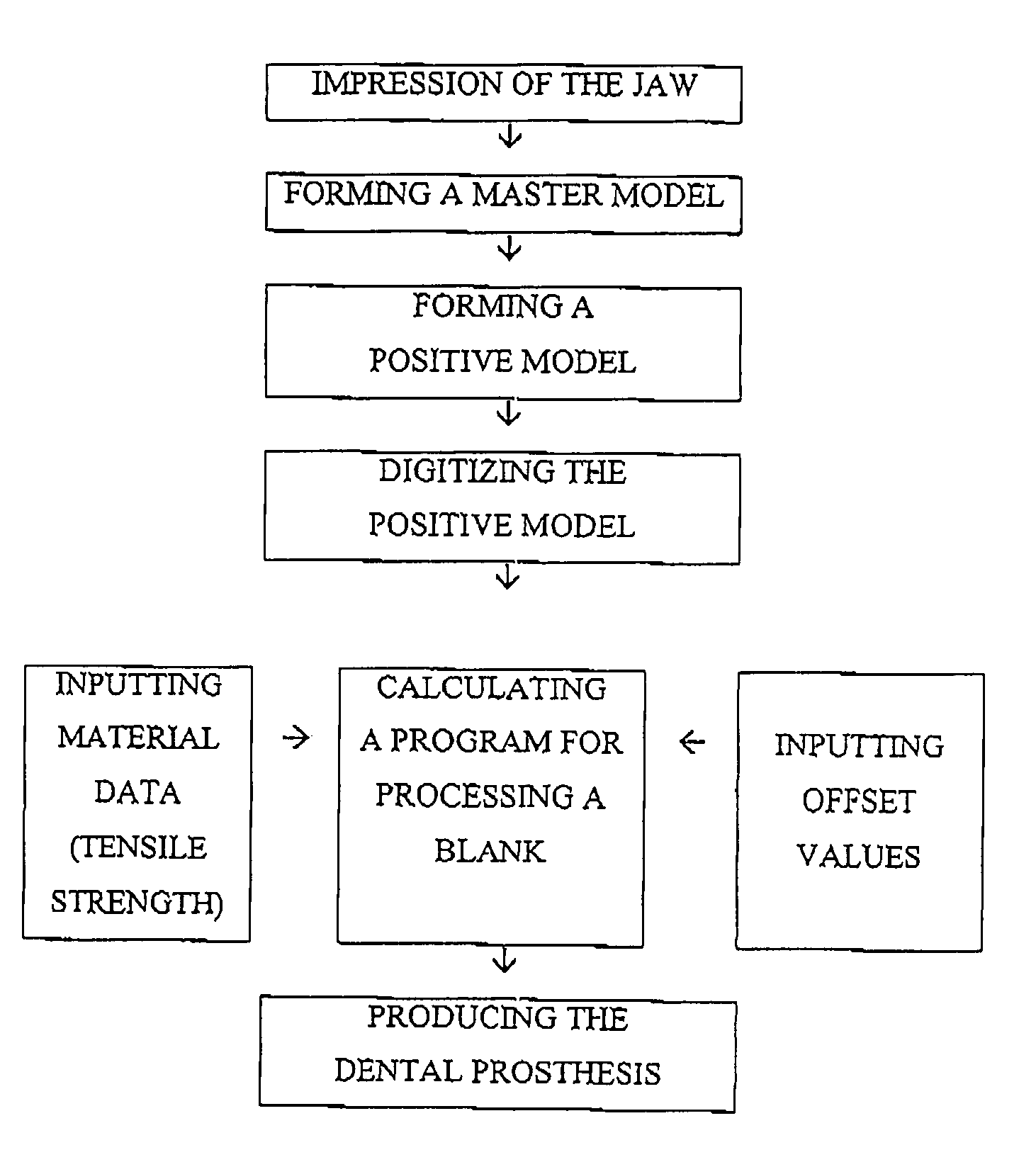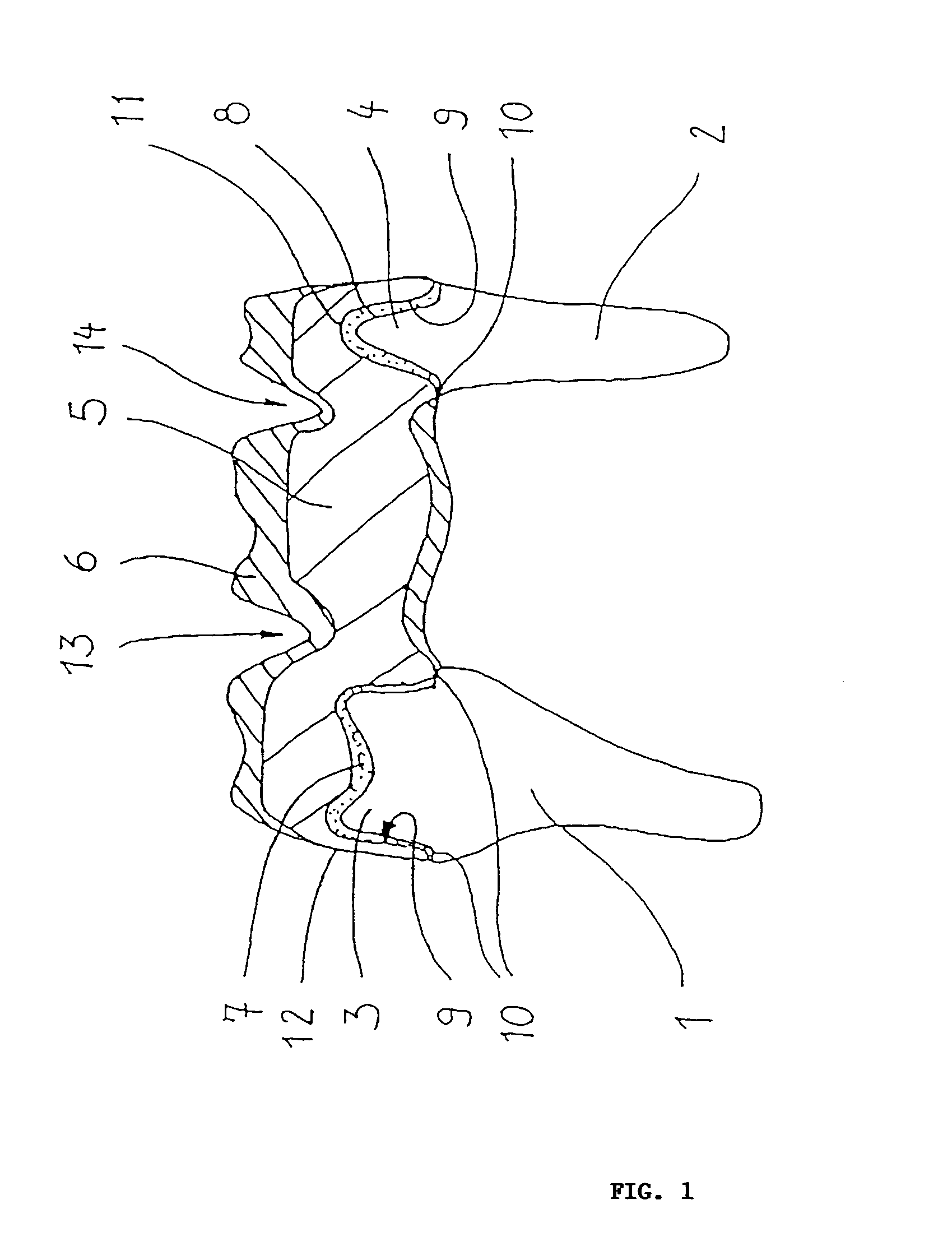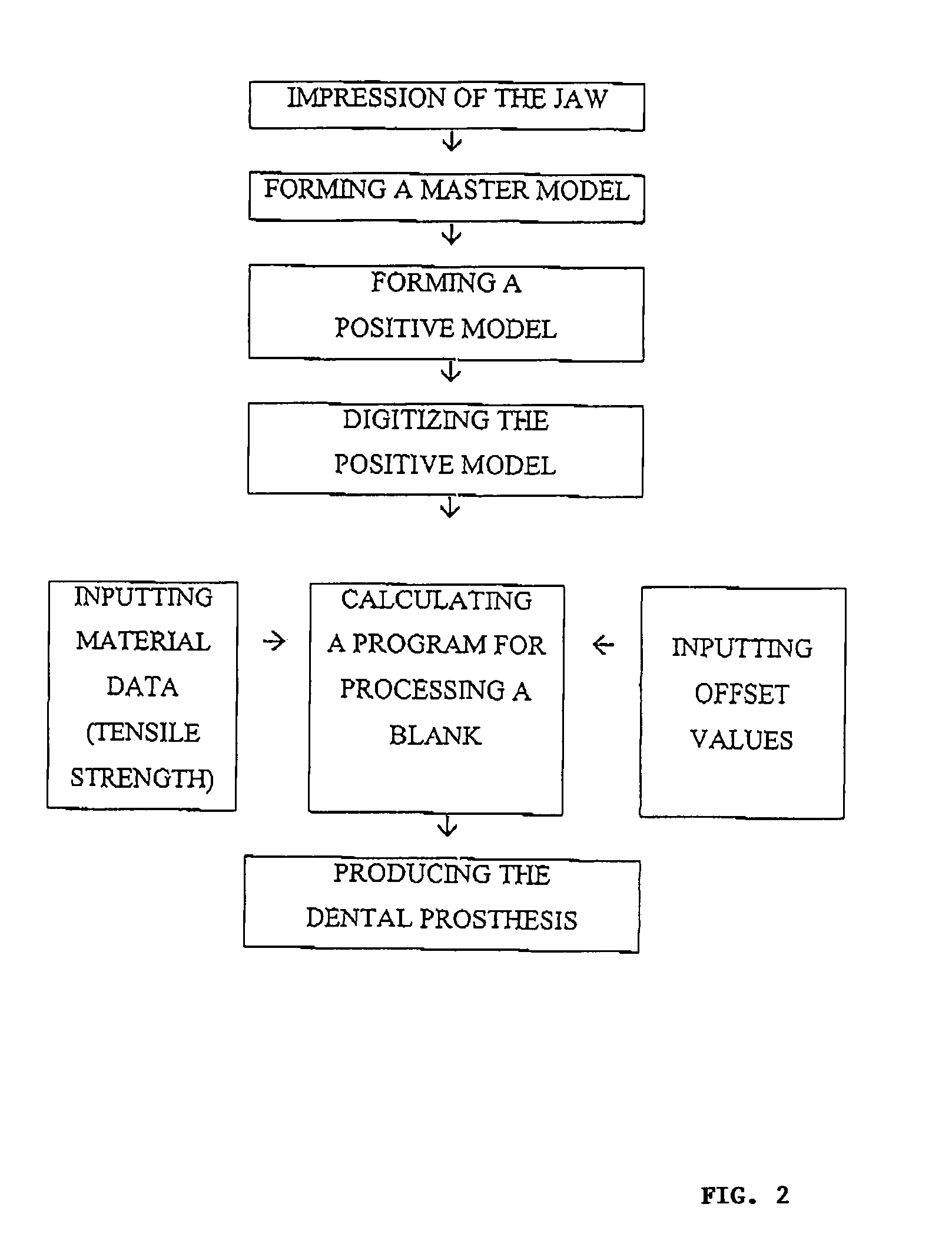Production of replacement teeth from a three-dimensionally determined and digitized positive model
a three-dimensional determination and positive model technology, applied in dental prosthetics, dental preparations, tooth crowns, etc., can solve the problems of patient discomfort, mechanical scanning device fixing to patient, and awkward manipulation of camera in patient's mouth, etc., to achieve cost efficiency and quality of dental prosthesis, sufficient strength, and sufficient aesthetic
- Summary
- Abstract
- Description
- Claims
- Application Information
AI Technical Summary
Benefits of technology
Problems solved by technology
Method used
Image
Examples
Embodiment Construction
[0048]FIG. 1 shows two prepared tooth stumps 1 and 2 which are to be smoothed in their upper areas 3 and 4 for receiving a dental prosthesis. In this case, the dental prosthesis comprises a basic bridge structure 5 which is, in addition, provided with a facing 6 in a conventional manner for producing the visual and masticatory surfaces. The basic bridge structure 5 is fastened in each case to the tooth stumps 1, 2 by means of a layer of a dental cement in the cement gaps 7 and 8.
[0049]For reasons of clarity, in particular the gap 7, 8 such as cement gaps are illustrated completely untrue to scale.
[0050]To produce the dental prosthesis, i.e. in the embodiment, the basic bridge structure 5 with the facing 6 with the desired gaps 7, 8, a master model of the jaw in which the dental prosthesis is to be placed is firstly produced according to the invention. The master model shows the situation of the patient in the mouth, i.e. positively, which is obtained from an impression corresponding...
PUM
 Login to View More
Login to View More Abstract
Description
Claims
Application Information
 Login to View More
Login to View More - R&D
- Intellectual Property
- Life Sciences
- Materials
- Tech Scout
- Unparalleled Data Quality
- Higher Quality Content
- 60% Fewer Hallucinations
Browse by: Latest US Patents, China's latest patents, Technical Efficacy Thesaurus, Application Domain, Technology Topic, Popular Technical Reports.
© 2025 PatSnap. All rights reserved.Legal|Privacy policy|Modern Slavery Act Transparency Statement|Sitemap|About US| Contact US: help@patsnap.com



